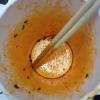October 6, 2018 - 2:25pm

Fresh Yeast Recipe
I came across some fresh yeast in a local grocery store today, got it because I've heard the flavour is amazing, then realised I've no idea what to do with it. I read a few articles on converting between active dry yeast and fresh yeast quantities, but I'm hoping one of you might be able to suggest a recipe that makes the best of the fresh yeast, and please do share any tips/tricks if you have any.
Thanks in advance!


Hi. For around a 4 or 5 hour fermentation time at room temperature use 0.8 -1% of the flour weight.
If you're in a hurry 2% for 2 hours total fermentation.
I've never noticed any difference in flavour that I could ascribe to fresh vs dried, but maybe that's just me. Ours comes in 25g blocks, and I generally try and cut it into eighths -- so about 3-4g -- for 500g of flour, with a long bulk. With so little yeast, I tend to cream it in a bit of the water to disperse it fully throughout the flour. If using more, then you can just crumble it gently and sprinkle that through the flour.
In Germany, Austria and other European countries the use of fresh yeast is very common, and you get it in every supermarket. Here, in the US, I had to convert all my recipes to instant yeast. Even if I see fresh yeast sometimes at Wholefoods, I wouldn't trust its freshness, since hardly anybody uses it.
The conversion rate: 100% fresh yeast = 50% active-dry yeast = 33% instant yeast (or 44%, if the dough is very rich).
For yeasted cakes you have to first mix the fresh yeast with some of the liquid and flour, and wait for it to get bubbly, before you mix the batter.
For bread dough it doesn't matter, since it's longer worked on (unless it's a no-knead bread), you can just dissolve it in some of the liquid and add it right when you mix the dough.
You can take any of your recipes and convert the dry yeast to fresh, using the ratio above, you don't need a special recipe.
In the German hobby baking community, it seems to me that the use of fresh yeast versus dry yeast is something almost like a religious belief. Having experience with both, I can't say that there is a big difference in taste.
There is a difference in performance, though: if you fresh yeast is not fresh enough, your dough will not rise well. And the dough needs to rise in a warm, draft-free environment. Some of my German friends would never bake yeast cakes at all after some frustrating early experiences.
Karin
Over the summer I was using fresh yeast to make pizza dough. I found it very difficult to get consistent dough results, because the activity of the yeast was declining with age, even though it was still in date.
One batch I bought underperformed right from when I bought it, even though it had a long best before and was in foil wrapped cubes.
So I've gone back to instant dried yeast. I do like to rehydrate the yeast with a little water at 40C for a few minutes prior to use, as I think it performs better and faster this way.
Lance
I always whisk the yeast first into the water to dissolve it (as I do with the starter). I don't know whether it affects the taste, but I think it works faster.
Karin